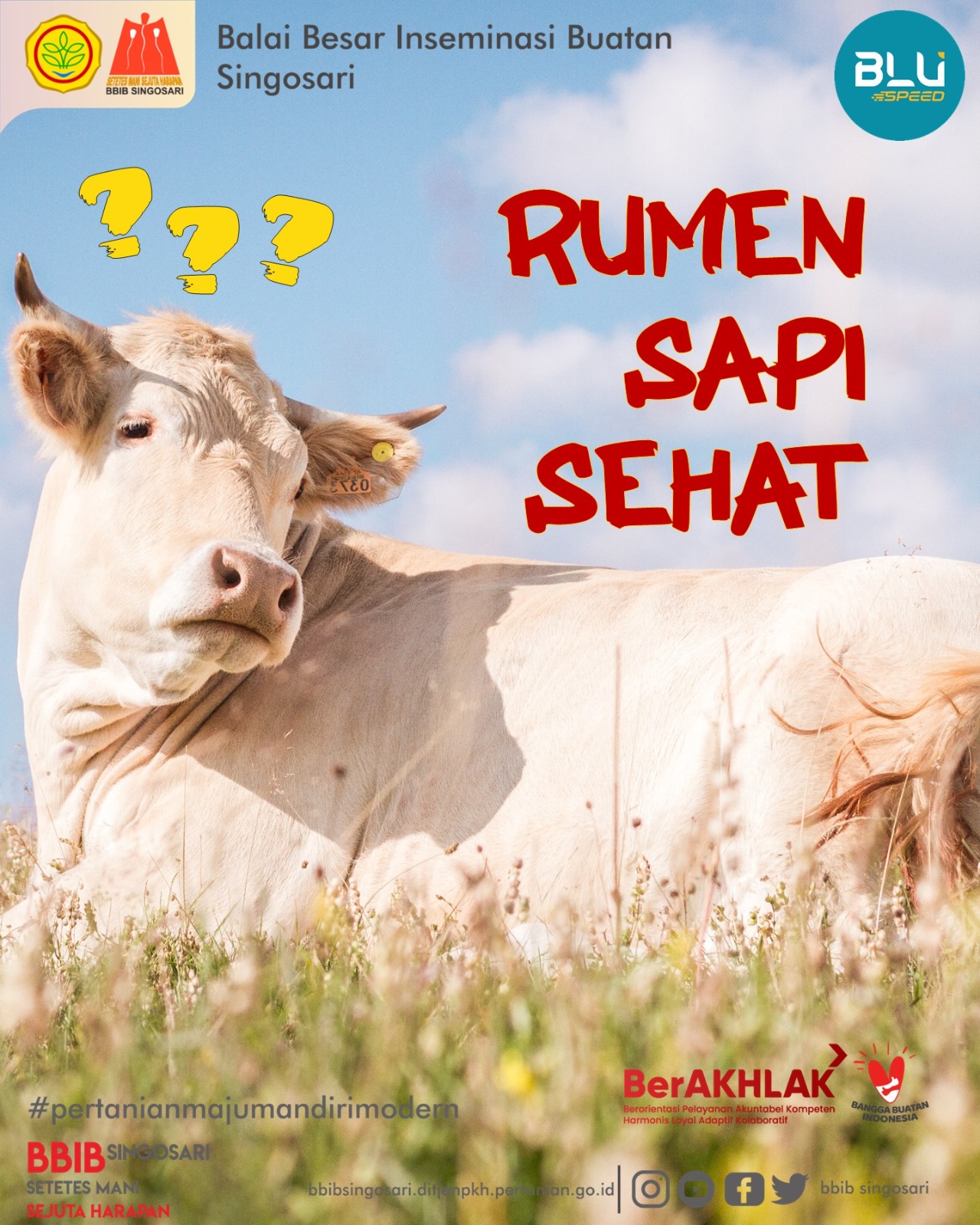
By: Drh Yayuk Kholifah
Position: Young Veterinary Medic
The rumen of a healthy cow undergoes contractions twice per minute. These contractions stir the contents of the rumen, allowing the bacteria in the rumen to come into contact with the ingested feed. The contractions also help to mix and churn the fine and solid feed materials within, making them easier to expel. Rumen movements enable longer feed particles to be brought back for further breakdown. Adult cows spend around 8 to 10 hours a day ruminating (chewing cud).
The process of rumination consists of four stages. The first stage involves regurgitation, where the material is brought back from the stomach to the mouth through the stimulated esophagus (the esophagus feels scratched). Some coarse material is then brought back to the mouth through reverse regurgitation movements. Once coarse materials are in the mouth, the second stage involves rechewing to further break down the feed into smaller particles for processing and eventual exit from the rumen. The third function is resalivation, where the cow produces more saliva during rumination. Saliva acts as a pH buffer, mixing with feed to stabilize rumen pH. A cow can produce around 88 liters of saliva per day if rumination is functioning properly. The fourth phase is the re-swallowing of the feed into the rumen.
As the feed is rechewed and the particle size becomes finer, it moves to the lower part of the rumen and can then transition to the next stomach compartment, the reticulum. The feed exits the rumen when particle size becomes fine and dense. Longer particles remain buoyant in the rumen, prompting repeated chewing and providing additional time for rumination. If the feed material is too coarse, like straw, it requires an extended period of chewing and repeated breakdown.
During rumen fermentation, significant amounts of methane, carbon dioxide, and other gases are produced and need to be expelled (around 28-47 liters per hour). Under normal conditions, gas pressure stimulates rumen contractions, which clean the esophagus area and facilitate easy gas expulsion. If the esophagus area cannot be cleared when gas is produced, trapped gas can lead to bloating in cows.
Source: Hutjens, Mike. 2008. Feeding Guide Third Edition. USA. W.D, Hoards & Sons Company.



